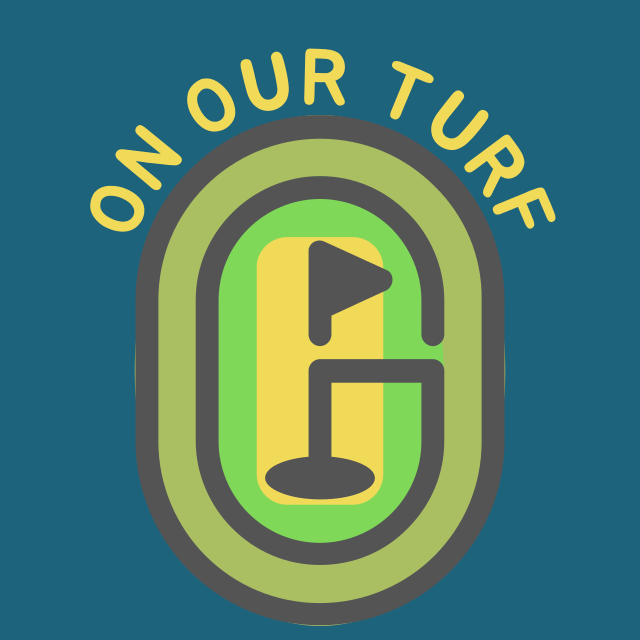Julian Lutz
I sat down with Stephen Lutz, a golf course superintendent of over 20 years and a proud father of five children, one of which being myself, to talk about the advances in technology of the golf course industry. We dove headfirst into the mowing and irrigation practices, the hiring process, and so much more.
I am currently 23 years old and decided to sit down with my dad to compare what the job was like when he was 23.
What year was it when you were 23? What was your position and where did you work?
It was 1988 and I was an AIT before there was such a thing. I was working at Mt. Pleasant Golf Club, Baltimore Municipal Golf Corporation – Daily Fee.
Looking back how much has technology advance since then? And what would you say is one advantage and one disadvantage?
There is no comparison. Irrigation programmed in the field, not in the office. Application equipment that required constant calibration, no GPS of any kind. No internet, no cellphones.
Advantage—increased technology
Disadvantage—increased technology
You answered both questions with the same answer, can you specify why? How has the technology helped you today? What was the adjustment like?
Technology has made much of what we do easier from irrigation programming to GPS application equipment, record keeping and communication. It has also taken away much of the human element. Not nearly as much personal interaction with industry partners – salesman and consultants. Everything is email and text. Also, cell phones have their place but way too much usage by employees and golfers on the course.
Was a turf degree considered to be an outlier at your age? Were there educational resources available? If so, were they accessible?
Turf degrees were not an outlier. While the number of people majoring in turf related majors was low compared to other majors, the overwhelming number of supers and assistants had either a 2- or 4-year degree in a turf related major. Turf education was available in many forms and considered necessary with some exceptions. No online options at the time but plenty of options none the less.
What were those options?
In the Mid – Atlantic area the schools of choice were PSU, UMD, UMASS, and Rutgers and the condensed program at Rutgers was popular then as well.
With the advances in cultural and mechanical technologies, what are the differences in the practices from then and now?
Much easier to practice water conservation today and site-specific irrigation.
How? What has helped with that?
Individual head control versus block systems, programming to the minute, cycle and soak functions, ET and other weather information, moisture meters.
The biggest difference with mowing was the ability to mow with lower heights of cut. .125 was a really big deal back in 1988, not so much today.
What were you mowing at .125 and what was the general height of cut for greens and fairways?
Greens 9/64 was low, 5/32 was every day. Fairways – .750 and .125 was Poa mostly on greens.
A normal day at work, what was the crew size? Were any women avidly working on the crew? Was it common for women to work in golf course maintenance?
Seasonal crew size for 18 holes was 16 with an assistant. Full time was 5. I worked with two women early on in my career, but it was rare.
What was the hiring process like back then?
Need a job—you’re hired- $4.00/hr. to start.
How did people find these jobs you were hiring for? How did training work? Today, we watch safety videos, was there something similar?
Most hires came from word of mouth. Assistant positions were advertised through the local and national associations but were much easier to fill back then. Less courses and positions to fill and plenty of candidates to go around. Training didn’t become as formalized as it is today until a few years later with training videos with new equipment and other services that were available. Training usually was done by a co-worker and trial by fire. Chains saws included!
Explain the relationship between fellow-supers/golf courses in the area.
Cool brotherhood that still exists today. Texting and cellphone pictures have made a difference in keeping in touch so to speak.
Has it become easier to communicate? Do you ever get together outside of work?
Cell phones and texting has made communication easier and depending on the region you work in there are opportunities to get together and network. Happy hours and golf outings as well as association events are all part of the Mid – Atlantic but not everywhere works like that.
If you could tell your 23-year-old self-one thing (regarding to work) what would it be?
You made a great choice for a career.
Why?
Like what you do and never work a day in your life!
Even with all these questions answered, we still can’t comprehend how different it truly was back then. The way technology has exposed us to amazing inventions like GPS technology, moisture meters, calibration devices, and simply cell phones, that make the past seem outdated. But from the perspective of working in the golf course industry in the year 1988, we know one thing. The best technology they had was their knowledge.
